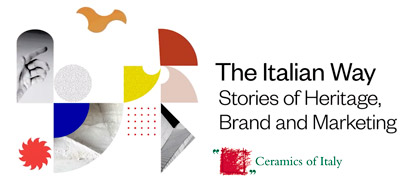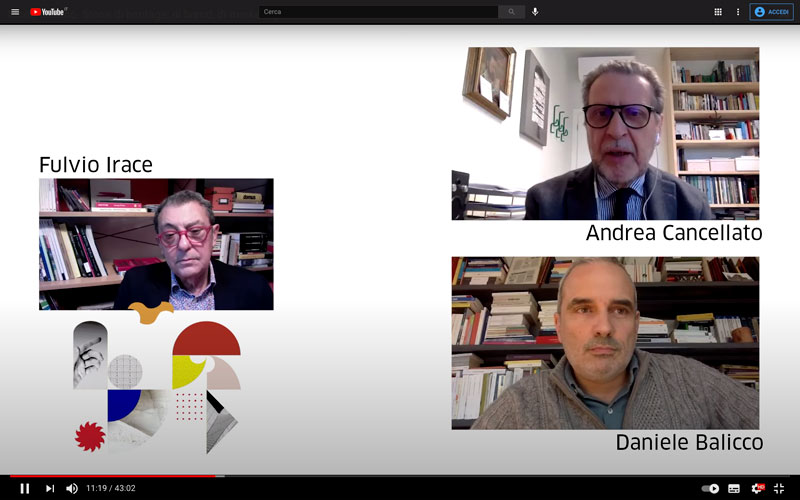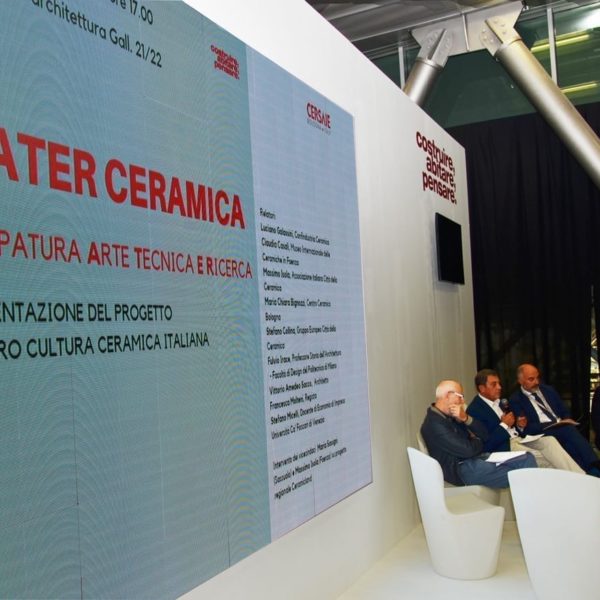History and Values


The Italian way of being “beautiful forever” | by Maria Teresa Rubbiani
We Italians have grown used to living with two different narratives of our identity and culture: on the one hand an awareness of being part of an age-old culture that has created unique works of beauty; on the other, a negative perception of ourselves and of our cultural, organisational and social systems.
But as soon as we leave Italy, we realise how we are seen by other countries. Admired, desired, sought after: what do Italian-made products actually represent in the contemporary world? Is the so-called “made in Italy” label merely an empty slogan, a worn-out stereotype, or does it represent something more?
These themes were discussed in an online conversation held on 22 December 2020 entitled “The Italian Way. Stories of heritage, brand and marketing”.

In his presentation of the recently-published Atlas of Ceramics. Surfaces for Architecture and Urban Space from 1945 to 2018, the work’s editor Fulvio Irace referred to another book published to great acclaim in 2012, “a documentary novel by American journalist Katherine Boo whose title I found particularly intriguing: Behind the Beautiful Forevers: Life, Death, and Hope in a Mumbai Undercity. A dramatic, sometimes surreal story, it is set in an Indian slum against the backdrop of a large advertising billboard bearing the words “Belle per sempre” written in Italian. An advertising slogan for Italian floor tiles, the billboard inhabits the narrow border zone between the slum and Mumbai airport, as though promising a world of happiness accessible to everyone,” said Irace.
This observation was the starting point for an interesting online discussion in which the participants concluded that the “made in Italy” label represents a distinctive “Italian way” of understanding modernity, an alternative approach to the Anglo-Saxon model based on mass production. Ultimately, this widely recognised and appreciated “Italian Way” is the contemporary expression of Italian culture and identity.
The following excerpts are taken from the conversation between Fulvio Irace, Andrea Cancellato, former Director of the Triennale Design Museum in Milan and now Director of the ADI Compasso d’Oro Museum, and Daniele Balicco, a researcher at Roma Tre University.

Fulvio Irace: Is there an “Italian way” that can be seen to influence the world of design?
Andrea Cancellato: “I think it is appropriate to talk about the “Italian way” together with “made in Italy” for the simple reason that Italian design is more than just design that happens to be made in Italy. It is the result of a set of skills relating to design, construction, communication and marketing, a complex system of activities and materials expertise that ultimately enables us to create products that fulfil very important needs in people’s daily lives.”
Daniele Balicco: “Reflecting on the relationship between design and Italian identity becomes much easier when you’re outside Italy. I spent a period of time doing research in New York, and although I was working on something entirely different, while living in New York I was strongly aware of the physical presence of Italy. I was struck by the fact that Italy was far more present than other European cultures: more present in objects, more present even in words. The key issue in my opinion is that, as a system of objects, Italian design has built up a very strong identity in recent decades, particularly abroad. In Italy, we are naturally aware of all of this but at the same time we are confronted by a kind of permanent counter-narrative of a country in a state of perennial crisis. When you’re living in Italy the two narratives coexist, although the negative counter-narrative is dominant. But as soon as you leave the country you can’t help being struck by the power and impact of a certain Italian “way of being”, which today is condensed into a set of objects, a model of consumption. This model has very distinctive characteristics that stand in opposition – albeit not radically – to the idea of standardisation and uniform mass consumption typical of the previous culture, the American and Anglo-French forms of modernisation. By contrast, the “Italian way” is a kind of anti-modern modernity that returns to the spirit of craftsmanship and focuses on the senses and a series of elements regarding everyday life, tastes, flavours, senses and colours. The result is an ideal and idealised image of modern Italy that, while often full of stereotypes, in my opinion succeeds in defining a different kind of modernity, an Italian modernity. We could describe it as the Italian approach to modernity, and it is certainly not in the minority outside Italy.”
See the short film entitled ‘Atlas of Italian Ceramics, Surfaces for Architecture and Urban Space from 1945 to 2018‘, curated by filmmakerFrancesca Molteni.
The characteristics of this Italian way can be observed in contemporary Italian products, including those of the ceramic sector, and its origins and growth are documented through the historical research conducted for publications such as the “Atlas of Ceramics” and ceramic company museums.

Next to speak was Maria Canella, author of a focus section devoted to the collaboration between fashion designers and the ceramic sector.
Fulvio Irace: When and why did fashion begin to play a role in the world of surface coverings?
Maria Canella: “The designer revolution and the birth of “made in Italy” in connection with the development of industrial design has prompted a rethink of all industrial-level production, so it is hardly a surprise that this should also have involved the world of ceramics and tiles. What I find particularly interesting is the fact that the arrival of fashion designers has also spurred a revolution within the world of production by leading to the creation of more expensive lines. The advent of this figurative approach has resulted in a renewal of colours and of production techniques, creating tiles that are more complex in terms of their processing and even sizes.”
March 2021
Other articles published in Stories of heritage, brands and marketing

“Mater Ceramica”, an ancient yet utterly modern material
The project launched by the Italian Ceramic Culture Centre now has a name: Mater Ceramica, where Mater is an acronym for Mapping of Art, Technology and Research.



